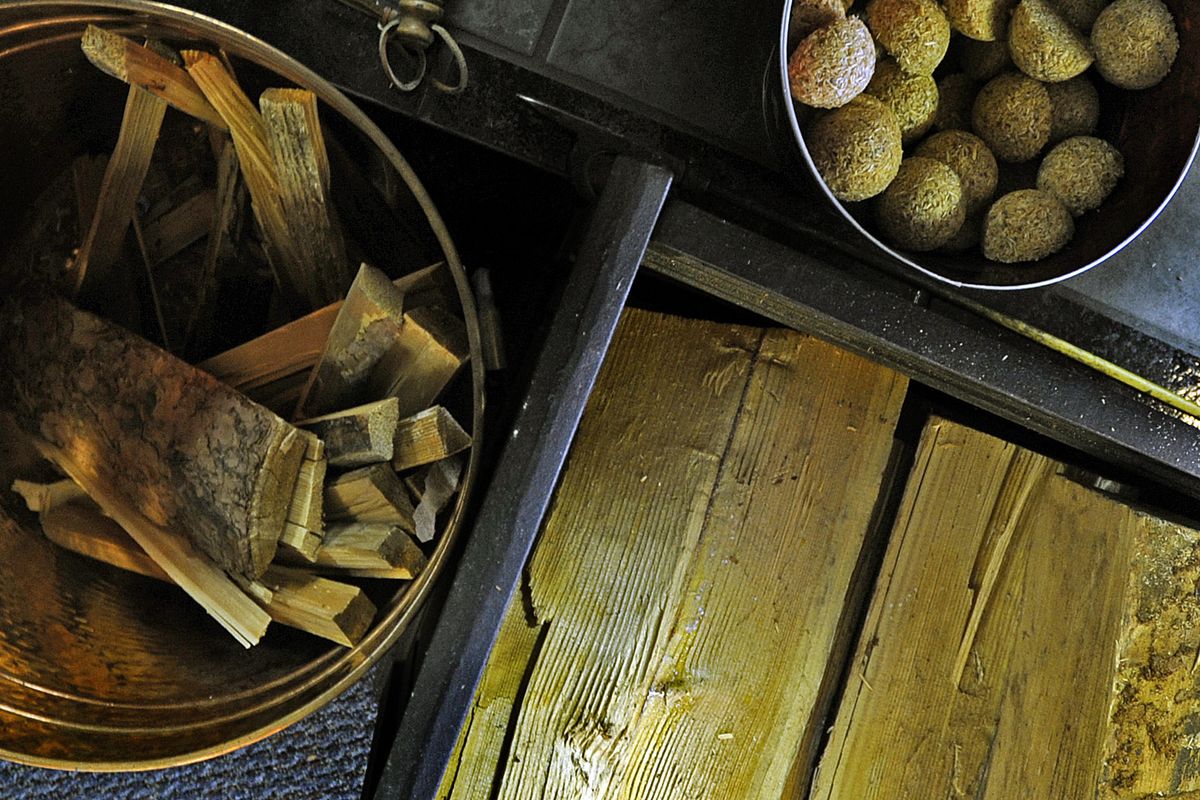Properly burning wood stove should produce little smoke

Fir and larch logs blazed in a wood stove as Fred Hauer summarized techniques for a clean, hot-burning fire.
He starts by lighting sawdust and paraffin nuggets. When they’re burning, he adds kindling. Only when the stove chimney is warm and drawing smoke does Hauer – a co-owner of Spokane Fireplace and Patio – put dry, seasoned wood on the fire, keeping the stove door open for a few minutes to give the blaze plenty of air.
Hauer dispenses burn tips with every stove he sells. With wood burning season firing up in the Inland Northwest, officials at the Spokane Regional Clean Air Agency are reminding people to follow clean burning techniques.
Wood heat is a long-standing local tradition, with many families relying on wood stoves to cut their heating bills. But wood smoke is also the chief source of Spokane’s wintertime air pollution, and Washington state law prohibits smoky chimneys. Only heat waves and an occasional wisp of smoke should be visible 20 minutes after the fire starts, said Lisa Woodard, the clean air agency’s spokeswoman.
“Burning wood is everyone’s right, but with it comes a responsibility to burn cleanly,” she said.
More than 32,000 Spokane County households use wood stoves for heat, according to the state Department of Ecology. Another 54,000 households in the county have fireplaces.
Nearly half of the wood stoves in use in Spokane were built before 1992, when the federal government began requiring manufacturers to install more stringent pollution controls. But in an old stove or new, a small, hot fire with dry wood is the key to fewer emissions, Woodard said.
Wood should be split, stacked and covered for six to 12 months before it’s burned. The wood’s moisture content shouldn’t be more than 20 percent.
“It still boils down to the operator,” Woodard said. “You can have a new stove, but if you’re not using it properly, you’ll still put out a lot of smoke.”
Smoky air has repercussions for home dwellers as well as people in the surrounding neighborhood, said Dr. Michael Kraemer, a pediatric allergist and asthma specialist in Spokane.
“If you have a poorly maintained wood stove, it’s just like smoking inside,” he said.
The Spokane Regional Clean Air Agency’s message comes on the heels of a study from the University of Washington about the danger that wood smoke poses to infants.
Babies exposed to the smoke had higher rates of bronchiolitis, a respiratory condition that is the leading cause of hospitalization during the first year of life, according to the study, the results of which were published this month in the American Journal of Respiratory and Critical Care Medicine.
Other studies indicate that children living in homes heated by wood stoves have higher rates of asthma and other respiratory problems than their peers. Kids are at higher risk from wood smoke than grownups because their lungs are still developing, Woodard said. Since they’re more active than adults, they’re also breathing in 50 percent more air for each pound of body weight.
Wood smoke also poses risks to other groups, including seniors and people with heart and lung diseases.
The culprits are fine particles produced from incomplete combustion – particles so tiny that 40 would fit into a grain of salt. The particles contain potential cancer-causing compounds, and they lodge in the lungs and enter the bloodstream.
Because they’re so small, the particles stay in the air a long time. They also travel from outside to indoors, affecting the neighbors of people who use wood stoves and fireplaces.
The Spokane air agency monitors particulates in the air at seven locations in Spokane County. When cold, stagnant weather sets in, preventing particles from dispersing, the agency calls burn bans to prevent the county from exceeding federal pollution limits.
Fines for burning during a ban start at $200, though households without another heat source can continue to burn, Woodard said.
Last year, the air agency made it through the burning season without having to call a ban. But the agency still received about 150 complaints about neighborhood problems with smoky chimneys.
“It’s just not right,” Woodard said, “to smoke out your neighbors.”